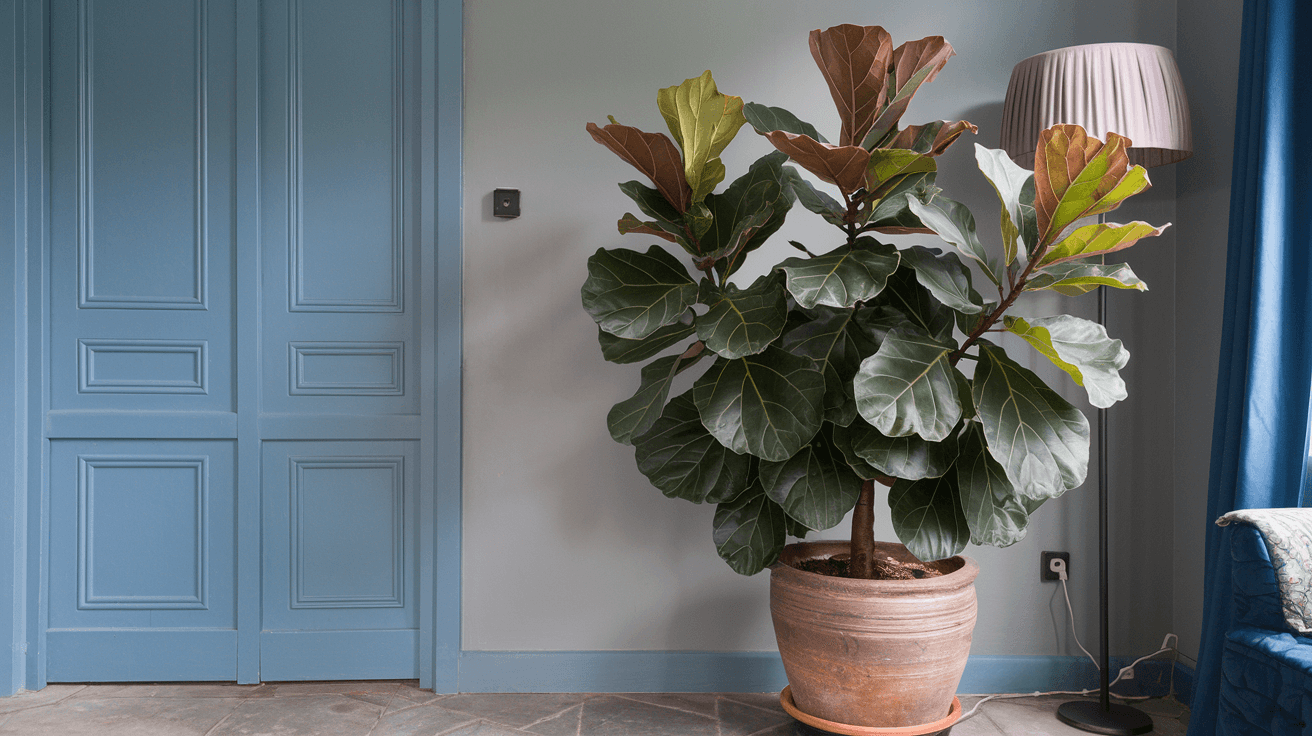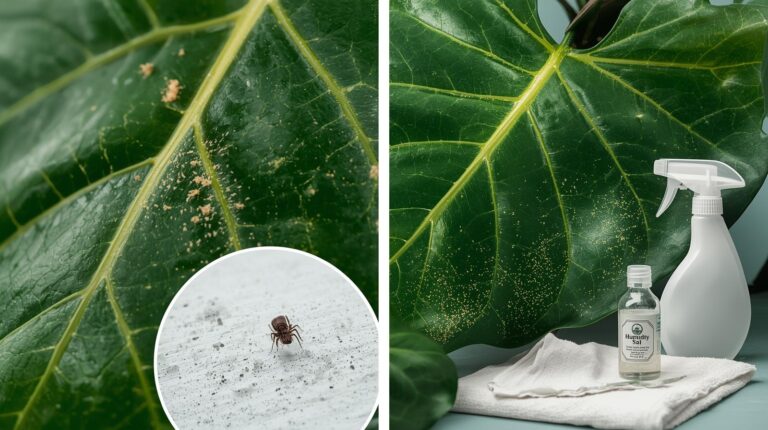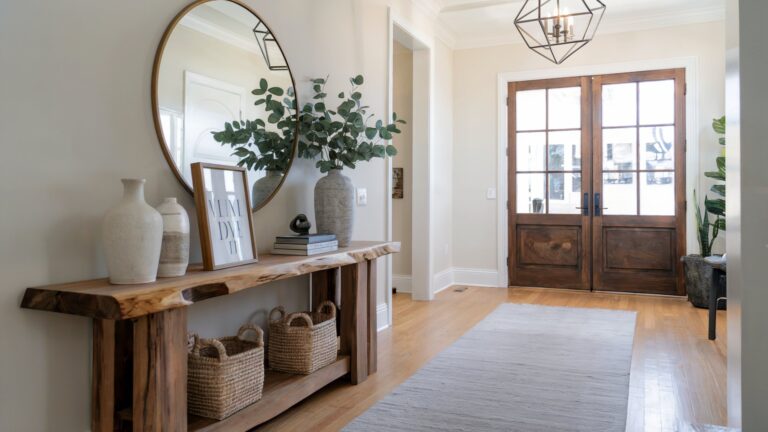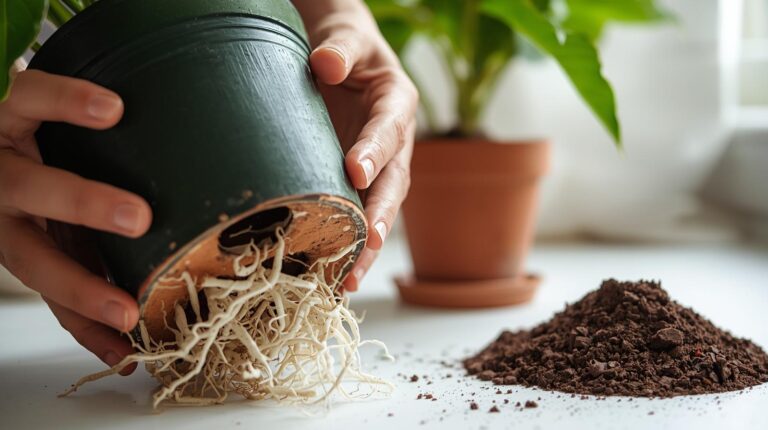You’ve just brought home a two-foot fiddle leaf fig, and you’re imagining it transforming into that impressive six-foot statement piece you’ve seen all over Instagram.
But then reality sets in: weeks pass, then months, and your fiddle seems frozen in time. The question “Is this normal?” starts nagging at you.
Understanding fiddle leaf fig growth rates is essential for setting realistic expectations and knowing when something is actually wrong versus when your plant is simply following its natural rhythm.
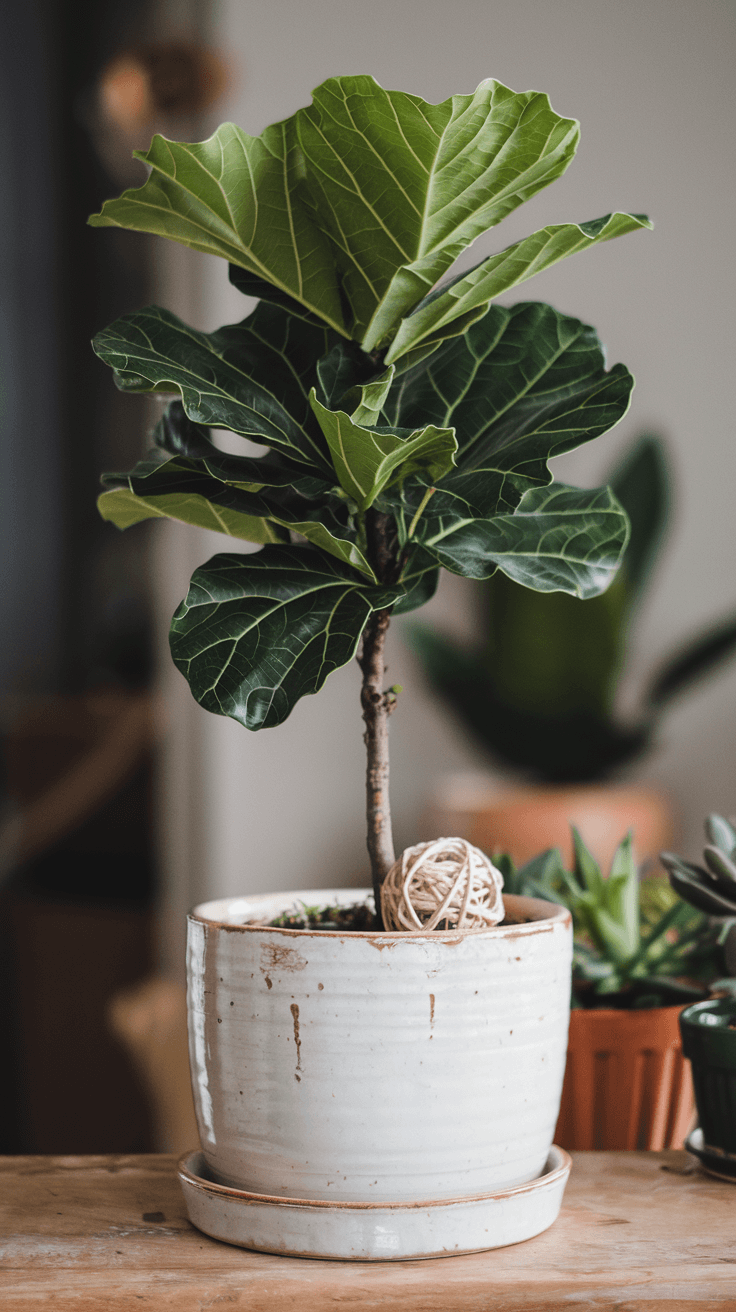
Over the years, I’ve tracked growth rates across dozens of fiddles in various conditions, and what I’ve learned is that growth isn’t linear or predictable in the way most plant owners expect. A healthy fiddle might produce one new leaf per month during peak season, then seem dormant for months during winter—and both patterns are completely normal.
This guide breaks down exactly what you should expect at different stages, which factors accelerate or slow growth, and how to tell whether your fiddle is thriving or struggling.
Typical Growth Rates Under Optimal Conditions
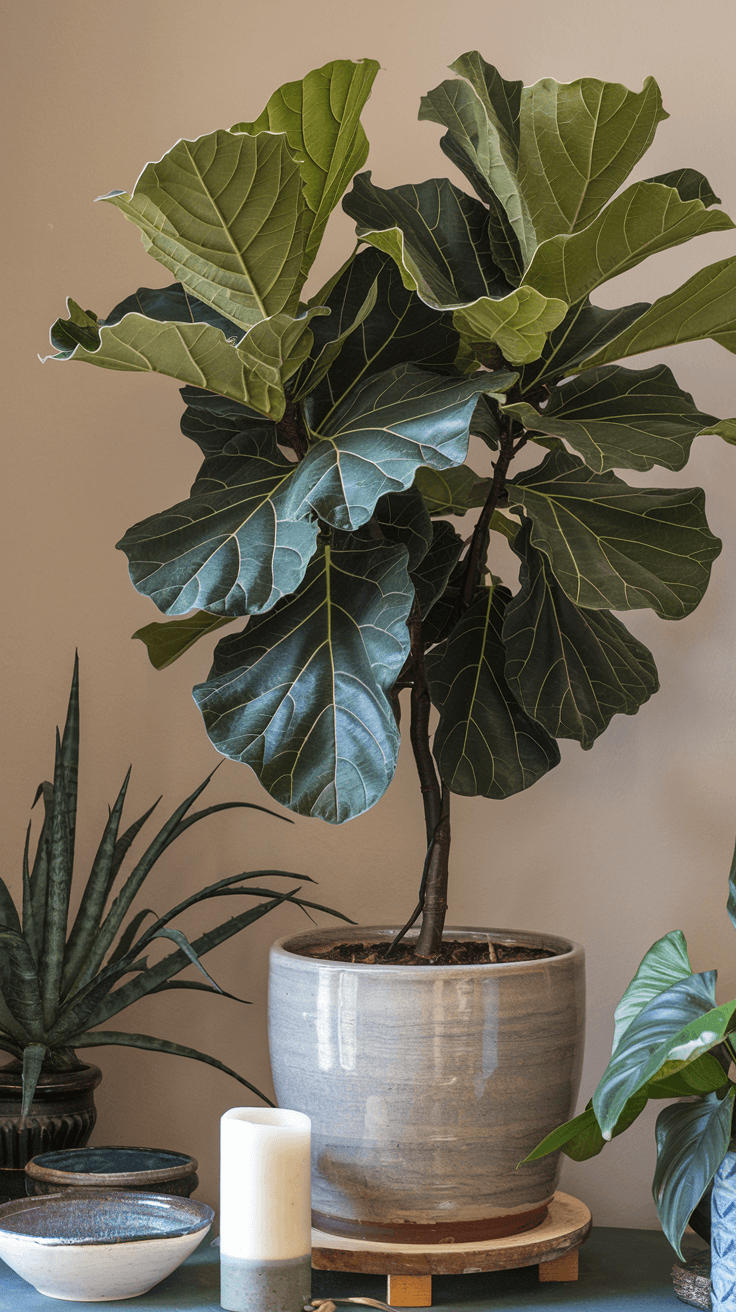
A fiddle leaf fig growing in ideal indoor conditions typically produces 12-18 inches of vertical growth annually, though this varies significantly based on plant maturity and environment. Young plants in the 1-3 foot range often grow more aggressively, sometimes adding 2-3 feet per year when conditions align perfectly.
Mature specimens over five feet tall slow considerably, focusing energy on filling out their canopy rather than gaining height.
The growth pattern manifests as new leaves emerging from the terminal bud at the top of each branch. During active growing season, a healthy fiddle produces one new leaf every 4-6 weeks. These leaves emerge tightly furled, gradually unfurling over 7-10 days to reach their full size.
I’ve found that tracking this leaf production rate gives you a much better sense of plant health than measuring height, since growth can be lateral as well as vertical.
What surprises many owners is that new leaves emerge progressively larger as the plant matures. A two-foot fiddle might produce 6-inch leaves, while that same plant at four feet will generate 10-12 inch leaves. This means growth accelerates in visual impact even as the rate of new leaf production remains relatively constant.
The fiddle appears to explode in size during its third and fourth years when it hits this sweet spot of maturity combined with vigorous growth.
Environmental factors dramatically influence these baseline rates. Light is the primary driver—a fiddle receiving 8 hours of bright, indirect light daily will vastly outpace one getting 4 hours in a dim corner. Temperature stability, humidity levels, and consistent care all compound to either support or suppress growth.
In my experience, two identical fiddles placed in different rooms of the same house can show 40-50% difference in annual growth purely due to light exposure variations.
Pro tip: Take monthly photos of your fiddle from the same angle and distance. Visual comparison over 3-4 months reveals growth patterns your eye misses day-to-day, helping distinguish normal growth from actual stagnation.
Growth Stages and Life Cycle Expectations
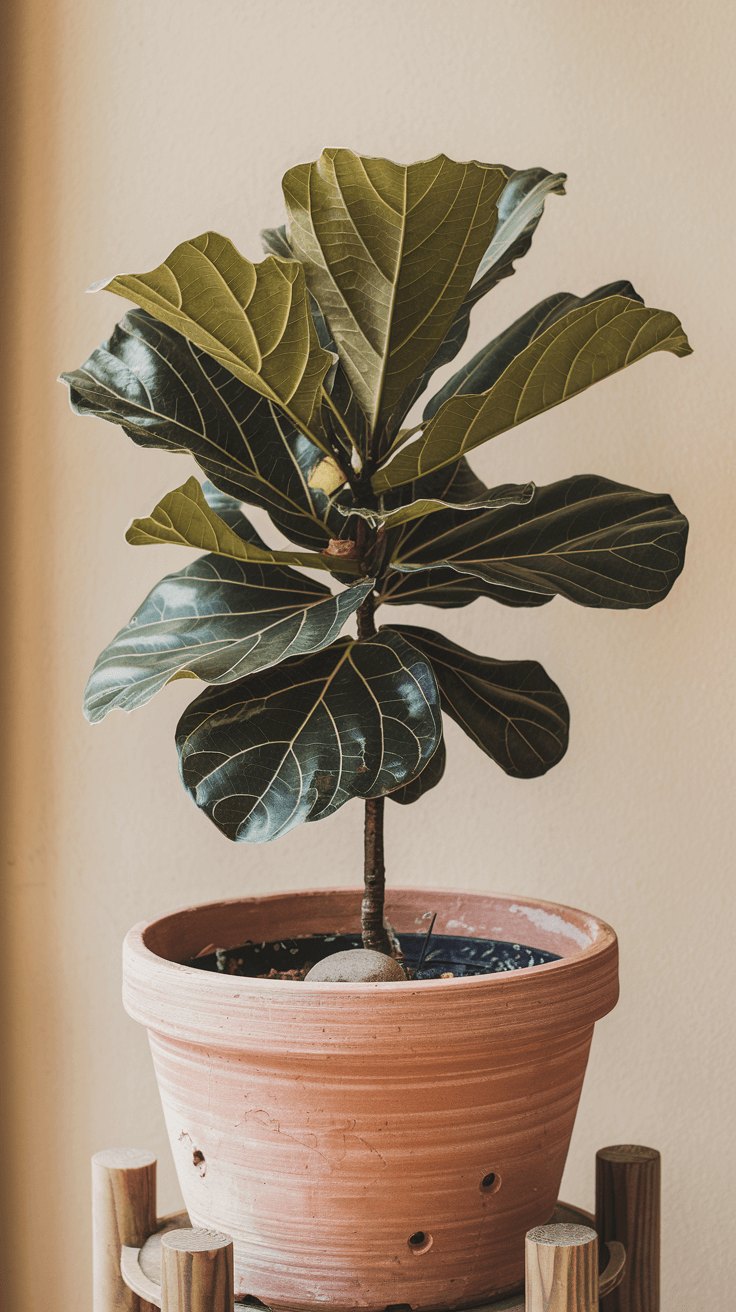
The first year after bringing a fiddle home is often deceptive. Many plants experience a settling-in period lasting 2-3 months where growth essentially pauses while roots establish in their new environment.
This is normal and doesn’t indicate problems—the plant is investing energy below the soil line rather than in visible foliage. I’ve seen fiddles that seemed completely dormant for three months suddenly explode with four new leaves in rapid succession once acclimated.
Young fiddles in the 12-24 inch range represent the most rapid growth phase. These plants are establishing their structure and, given proper care, can easily double in height within 18 months. They tend to grow more vertically with less branching, producing leaves in a columnar pattern.
This is the stage where you’ll see the most dramatic month-to-month changes, with new leaves appearing as frequently as every 3-4 weeks during summer.
Once a fiddle reaches 3-4 feet, growth shifts character. Rather than shooting straight up, the plant begins investing energy in trunk thickening and branching development.
This is when strategic pruning becomes valuable—cutting the terminal bud encourages lateral branches, creating that full, tree-like appearance most owners desire.
Growth during this phase seems slower because it’s distributed across multiple growing points rather than concentrated in a single upward thrust.
Mature specimens over five feet enter maintenance mode. Annual height gain might be only 6-8 inches as the plant focuses on sustaining its existing mass and producing robust leaves. This doesn’t mean the plant is declining—it’s simply reached a stable equilibrium between growth and resource allocation.
These older fiddles often develop incredibly thick trunks and spectacular branching patterns that younger plants lack.
Expert insight: If you want a tall, single-trunk fiddle, leave it unpruned and provide strong light. For a bushy, multi-branched tree, prune the top when it reaches your desired height, forcing lateral growth at lower nodes.
Seasonal Growth Patterns and Environmental Impact
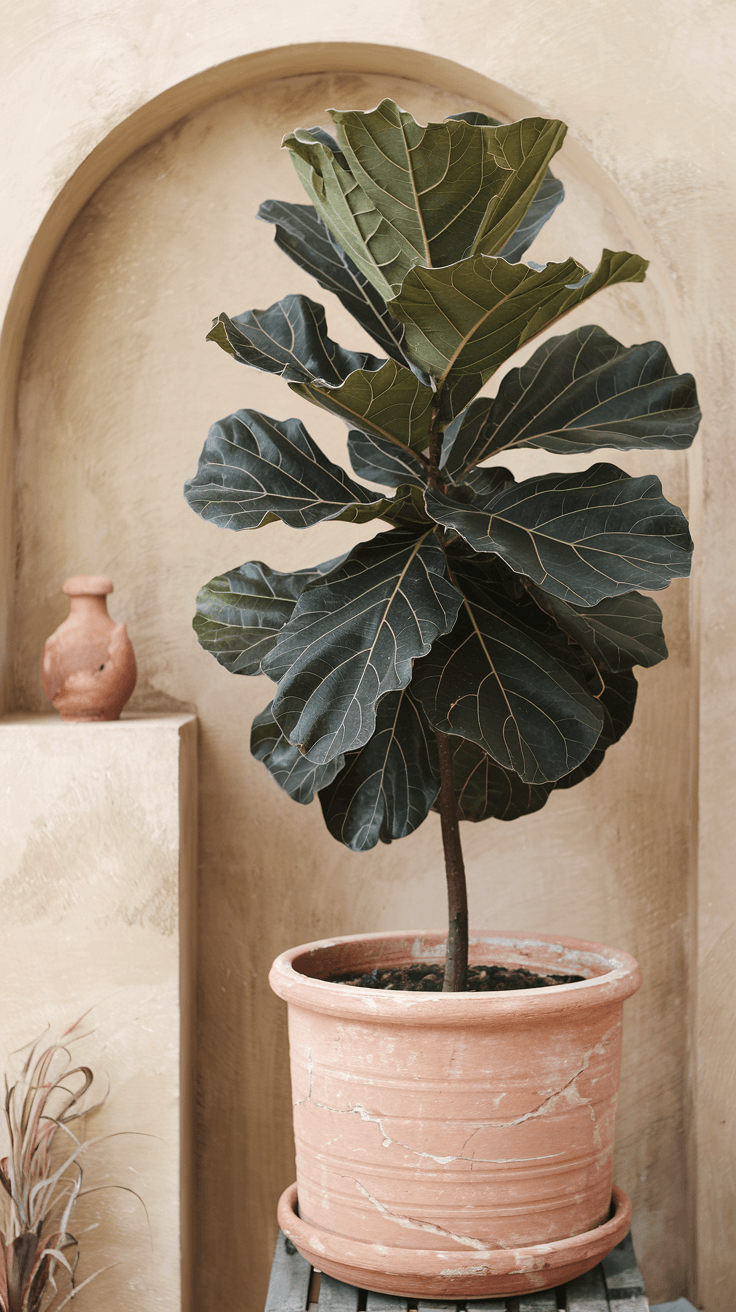
Fiddle leaf figs are deeply influenced by seasonal light cycles, even indoors. Growth accelerates dramatically from March through August when daylight hours increase and light intensity strengthens.
During this period, a healthy fiddle might produce a new leaf every 3-4 weeks, adding noticeable height and fullness.
I mark spring equinox on my calendar as the unofficial start of “fiddle growth season” and adjust my care routine accordingly—increasing fertilization and monitoring water needs more closely.
Summer represents peak growth velocity. If your fiddle is going to add significant size, it happens during June, July, and August. The plant capitalizes on maximum light availability and warm temperatures to generate multiple new leaves in quick succession.
This is when you might see 8-10 inches of vertical growth in a single season if all conditions align. However, be aware that growth spurts require increased resources—water consumption rises noticeably during active growth phases.
Fall brings a natural slowdown as daylight decreases and indoor conditions shift. Starting in September, new leaf production stretches from every 4 weeks to every 6-8 weeks. By November, most fiddles enter semi-dormancy where visible growth essentially stops.
This transition confuses many owners who think something is wrong, but it’s simply the plant’s natural response to reduced light levels. Forcing growth during this period with excessive fertilization typically backfires.
Winter dormancy lasts from December through February in most indoor environments. Expecting new leaves during this period is unrealistic unless you’re supplementing with grow lights. The plant maintains its existing foliage but directs minimal energy toward expansion.
I’ve learned to view winter as the plant’s rest period—a time to maintain stability rather than push for growth. When spring arrives, well-rested fiddles rebound with impressive vigor.
Action step: Mark your calendar for seasonal transitions and adjust expectations accordingly. Knowing your fiddle naturally slows in fall prevents unnecessary troubleshooting and care changes that might cause more problems than they solve.
Maximizing Growth Rate Through Strategic Care
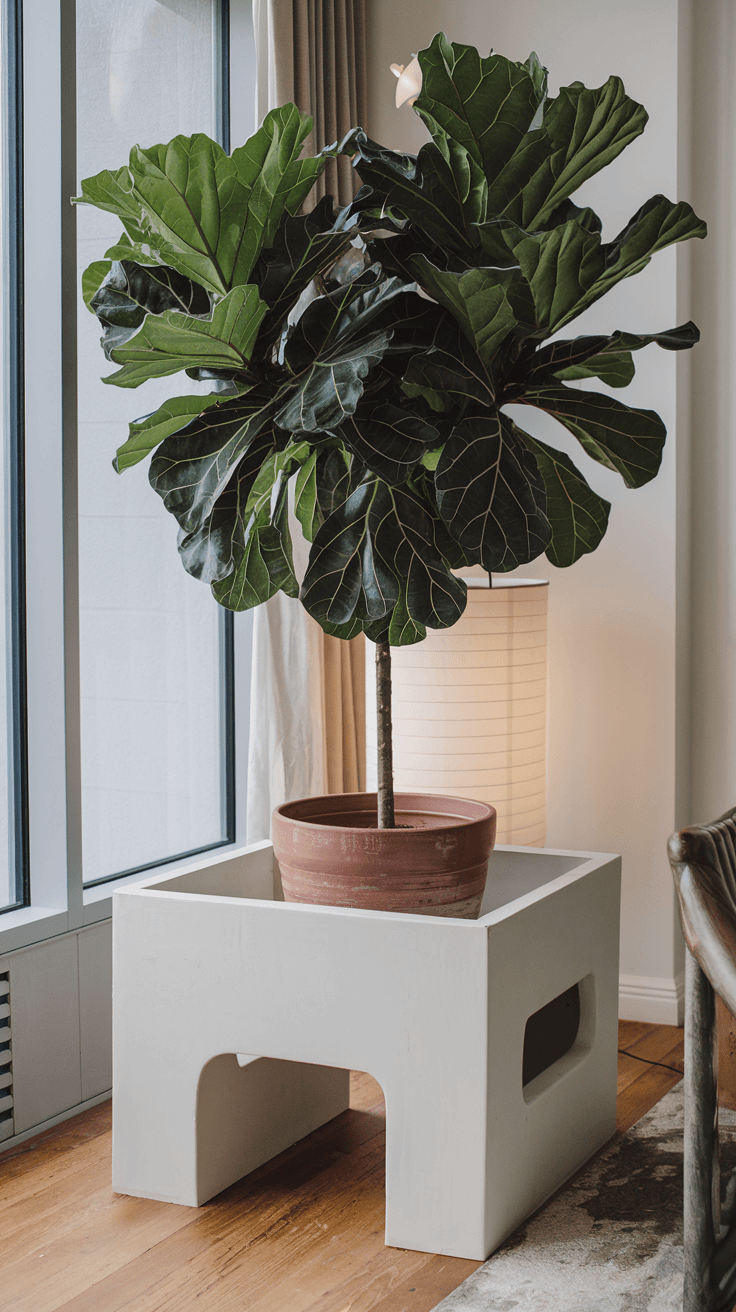
Light is the single most powerful growth accelerator for fiddle leaf figs. Moving a plant from moderate light to bright, indirect light can double its growth rate within a single season. I’ve consistently observed that fiddles placed within 3-5 feet of south or west-facing windows produce twice as many leaves annually as those in dimmer locations.
If growth is your priority, optimizing light exposure trumps every other care adjustment.
Fertilization during growing season provides the raw materials for rapid growth, but only if the plant can utilize them. I use a balanced liquid fertilizer at half strength every two weeks from March through September, which supports consistent leaf production without risking nutrient burn.
The key is matching fertilizer input to the plant’s actual growth rate—a fiddle producing a new leaf every 4 weeks needs regular feeding, while one showing no new growth shouldn’t be fertilized regardless of season.
Root health directly determines growth potential. A fiddle that’s root-bound will stall growth even with perfect light and nutrition. I check root systems annually by gently removing the plant from its pot—if roots circle densely around the soil ball, it’s time to upsize.
Moving to a pot 2 inches larger in diameter typically triggers a growth spurt within 6-8 weeks as roots expand into fresh soil.
Consistency in watering, temperature, and humidity allows the plant to allocate maximum energy to growth rather than stress management. Wild fluctuations force the fiddle into survival mode, shutting down growth to conserve resources.
I maintain humidity between 40-60% and temperatures between 65-75°F year-round, creating stable conditions that enable sustained growth. Even small improvements in environmental stability produce measurable increases in annual leaf production.
Conclusion: Setting Realistic Growth Expectations
Understanding fiddle leaf fig growth rates is fundamentally about aligning your expectations with biological reality.
These plants don’t grow at a steady, predictable pace—they surge during optimal seasons, pause during winter, and respond dramatically to environmental conditions.
A healthy indoor fiddle adding 12-18 inches annually is performing exactly as it should, even though this might feel slow compared to outdoor tropical plants or faster-growing houseplants.
The owners who succeed long-term are those who learn to read their plant’s growth signals and adjust care to support natural rhythms rather than fighting against them.
Track leaf production rather than height, recognize seasonal patterns as normal rather than problematic, and focus on creating stable, optimal conditions that enable your fiddle to reach its genetic potential.
Growth might be slower than you initially hoped, but the reward is a structurally sound, healthy plant that becomes more impressive with each passing year.

